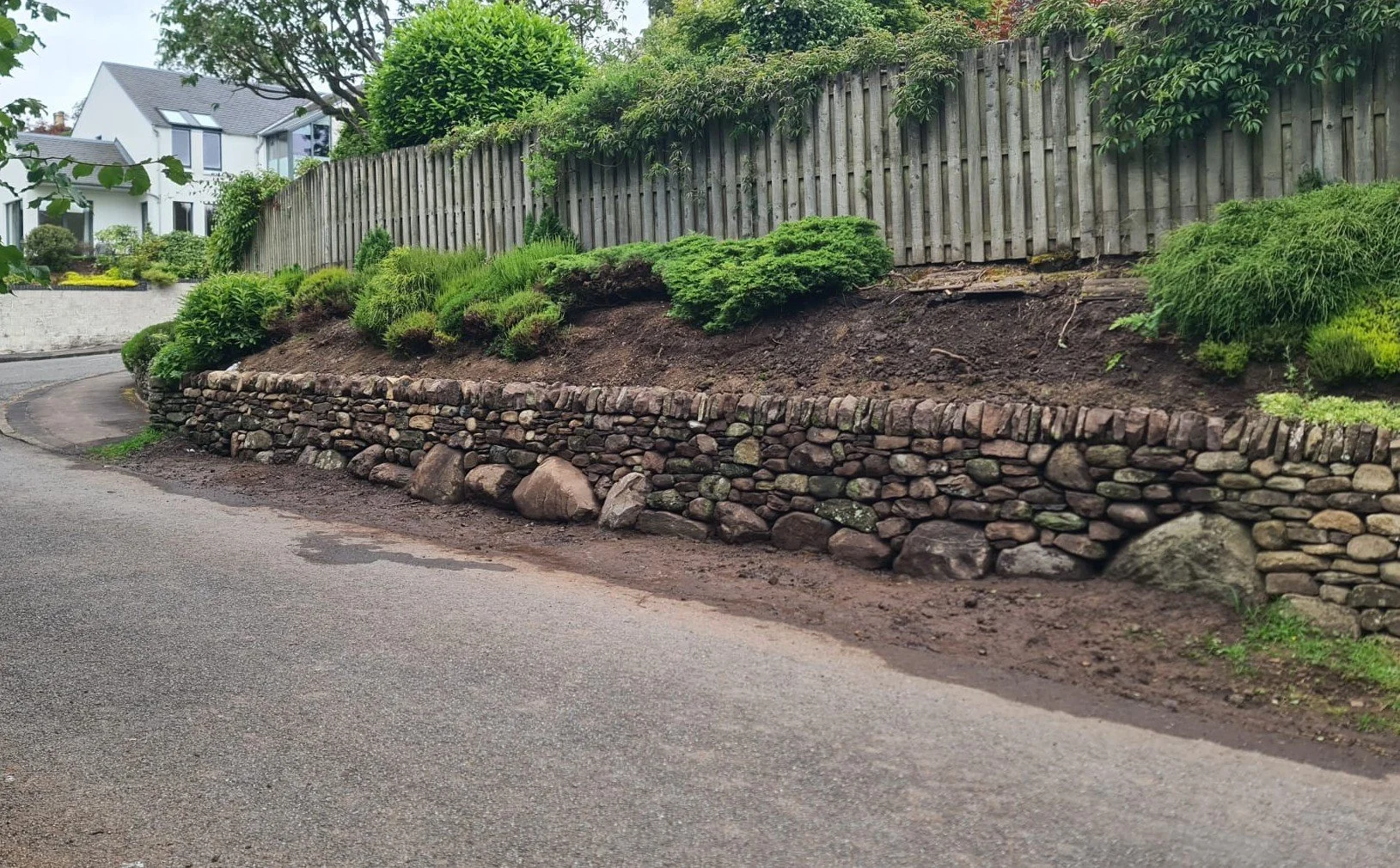Drystone Retaining Wall Repair, Bridge of Allan, Stirling.
We recently carried out some work in the lovely Bridge of Allan, so it was a pleasure to go back, this time for a repair to a drystone retaining wall.
As you can see from the picture on the right, the wall was beginning to bulge and wave, letting us know that at some point soon the structure would fail.
While stripping out we found the majority of the stone to be traced (for those unfamiliar with walling terms, check out our glossary). It also seemed like the packing had been tipped in. Packing (or hearting) is integral to the wall’s structure and longevity so every piece must be placed by hand. The traced stone plus the hastily added packing were likely the reasons for the movement in the wall and the inevitable structural failures.
When we were stripping out the wall, we also ran into bedrock. It’s not often you will come across this in a residential cul de sac. The bedrock was a surprise but we used it to our advantage, building against it to give the wall extra strength.
When a lot of stone is traced within a structure, we almost always have to bring in extra stone to complete the repair. As the wall was already a mix of sandstone and fieldstone, we brought in more fieldstone to finish the build.
The section of the wall we were repairing had flat copes, whereas the adjoining sections were built with vertical copes. To give the entire wall some visual coherence and to blend the newly repaired section into the older sections we decided to build back with vertical copes.
As you can see from the image below, this rebuild and repair makes a huge difference to the property, has avoided an incident where a fallen wall could block the residential street and as with all of our structures we guarantee that it will last for generations.



